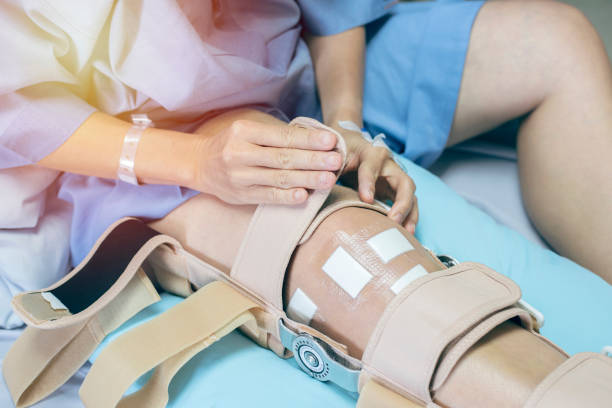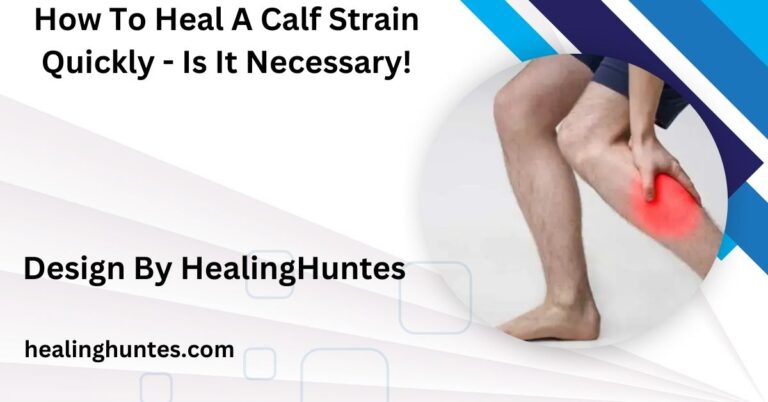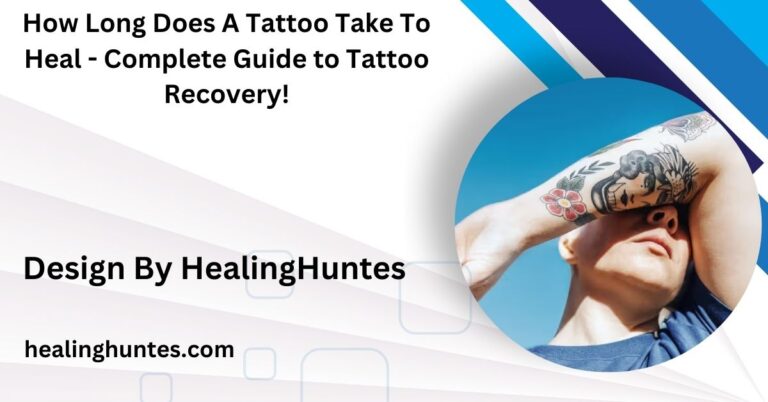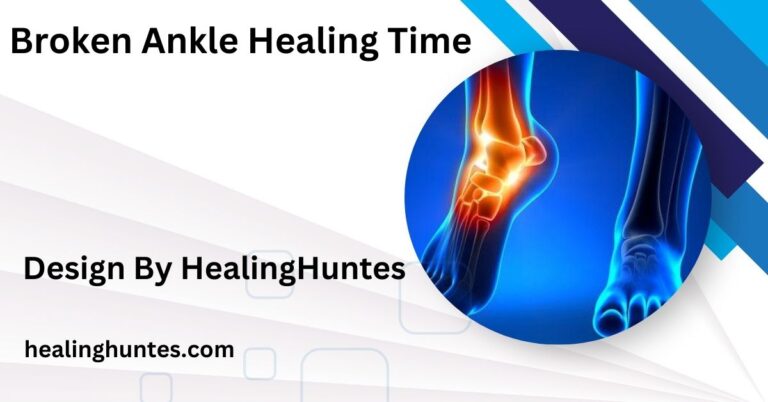How Long Can A Ligament Take To Heal – Ligament Healing Time!
Ligament healing time varies widely, with mild injuries healing in 2–4 weeks, while severe tears may take months or require surgery. Factors such as injury severity, location, age, and overall health influence recovery speed.
Understanding the healing journey of ligaments can make all the difference in your recovery and prevent future injuries.”
Introduction to Ligament Healing:

- What Ligaments Are: Explain that ligaments are strong bands of connective tissue that connect bones to other bones, allowing for joint stability and flexibility.
- Common Ligament Injuries: Mention types of ligament injuries, such as sprains (common in ankles, knees, wrists, etc.), and explain how they can happen during sports, accidents, or daily activities.
- Healing Challenges: Highlight why ligaments take longer to heal than other tissues. Ligaments have limited blood flow, which slows the delivery of nutrients and oxygen essential for healing.
Factors Affecting Healing Time:
- Severity of the Injury: Describe how healing time varies between mild sprains (Grade I), moderate (Grade II), and severe tears or complete ruptures (Grade III). Mild sprains may heal in 2-4 weeks, while complete tears can take months or may need surgery.
- Location of Injury: Explain that some ligaments, like the ACL in the knee, are more complex and take longer to heal due to joint dynamics and stress.
- Age and Overall Health: Discuss how young, healthy people typically heal faster than older individuals or those with underlying health issues like diabetes or arthritis.
- Treatment Methods: Mention that those who receive timely medical intervention, follow a physical therapy program, and avoid reinjury often experience faster recovery times.
Stages of Ligament Healing:
- Inflammatory Stage (1–3 days): Describe how the body’s first response is inflammation, which brings cells to remove damaged tissue and begin the healing process.
- Proliferative Stage (4 days–6 weeks): New tissue formation starts, but it is fragile. This phase is crucial for laying down collagen, the main protein in connective tissue.
- Remodeling Stage (Up to 12 months or more): During this phase, collagen fibers align and strengthen to restore the ligament’s original function and stability. This stage is often the longest and can extend well beyond a year, especially in severe injuries.
Also Read: How Long Does A Sprained Finger Take To Heal – Tips for a Speedy Recovery!
Typical Healing Times for Common Ligament Injuries:
- Ankle Sprains: Generally 2–6 weeks, with severe injuries potentially taking up to 12 weeks.
- Knee Ligament Injuries (ACL, MCL, etc.): Describe how minor knee sprains can heal in a few weeks, but complete ACL tears often require surgery and may take 6–12 months for full recovery.
- Wrist Ligaments: Mention that minor wrist sprains might heal in 2–4 weeks, while more severe injuries can require several months and possibly surgery.
- Elbow Ligaments (e.g., UCL in pitchers): Explain how UCL injuries might take a few months for mild strains, with complete tears requiring reconstructive surgery (Tommy John surgery), which may extend healing to a year or more.
Treatment Options and Their Impact on Healing:

- Rest, Ice, Compression, Elevation (RICE): Explain that this initial treatment reduces inflammation and pain, setting the stage for proper healing.
- Physical Therapy: Describe the role of strengthening and range-of-motion exercises, supervised by a therapist, in regaining mobility and strength.
- Medication and Pain Management: Note that anti-inflammatory medications and pain management can help but should be used under medical advice, as they can sometimes inhibit healing if used long-term.
- Surgical Interventions: Discuss when surgery is necessary and how it impacts the timeline. Surgical repair can often extend healing by several months, especially as the body adapts to grafted or restructured ligaments.
Tips for Faster Ligament Recovery:
- Follow a Professional Rehabilitation Program: Describe how following a guided recovery plan improves outcomes and helps avoid reinjury.
- Nutrition for Healing: Highlight foods high in protein, vitamins C and D, and minerals like zinc, which can support tissue repair.
- Avoiding Re-injury: Mention the importance of not pushing the injured ligament too soon and using supports like braces or wraps to stabilize the joint during recovery.
- Staying Active Safely: Suggest low-impact exercises like swimming or cycling to maintain fitness and circulation without straining the injured ligament.
Natural Remedies and Supplements for Ligament Healing:
- Herbal Remedies: Discuss natural anti-inflammatory herbs like turmeric, ginger, and boswellia, which can help reduce swelling and pain when used as part of a balanced recovery approach.
- Supplements: Talk about supplements such as collagen, glucosamine, chondroitin, and omega-3 fatty acids, which may support ligament strength and repair. Emphasize consulting a healthcare provider before starting any supplements.
Also Read: How To Heal A Torn Meniscus Naturally – How to Heal Without Surgery!
Preventing Ligament Injuries in the Future:
- Strength and Conditioning: Explain the importance of strengthening surrounding muscles and improving joint flexibility to reduce the risk of future injuries.
- Warm-up and Cool-down Routines: Describe how warming up before physical activities and cooling down afterward can help protect ligaments.
- Using Proper Techniques and Gear: Suggest that athletes and active individuals practice correct techniques and use supportive gear, like braces or wraps, in high-risk activities to reduce strain on ligaments.
These additions provide a well-rounded view of both healing and prevention, enhancing the article’s value to readers.
When to Seek Medical Advice?
- Explain symptoms that may indicate complications, like chronic pain, swelling, instability, or inability to bear weight on the joint, as well as when to consider follow-up imaging or tests to assess healing progress.
FAQ’s
1. How long does it take for a ligament to heal?
Healing time varies: mild injuries can take 2–4 weeks, moderate injuries may take 4–6 weeks, while severe tears can take several months and may require surgery.
2. What factors affect ligament healing time?
Factors include the severity and location of the injury, the individual’s age, overall health, and the promptness of treatment received.
3. What are the stages of ligament healing?
Ligament healing occurs in three stages: the inflammatory stage (1–3 days), the proliferative stage (4 days–6 weeks), and the remodeling stage (up to 12 months or more).
4. What treatments can help speed up ligament recovery?
Treatments like the RICE method (rest, ice, compression, elevation), physical therapy, proper nutrition, and sometimes surgery can significantly aid recovery.
5. When should I seek medical advice for a ligament injury?
Seek medical attention if you experience persistent pain, swelling, joint instability, or difficulty bearing weight, as these may indicate complications that require further evaluation.
Conclusion
Understanding how long ligaments can take to heal is crucial for effective recovery and prevention of future injuries. Healing times vary widely, with mild injuries generally taking 2–4 weeks and severe tears potentially requiring months or surgery. By being aware of the factors that influence recovery and following proper treatment protocols, individuals can enhance their healing journey and maintain joint health.






